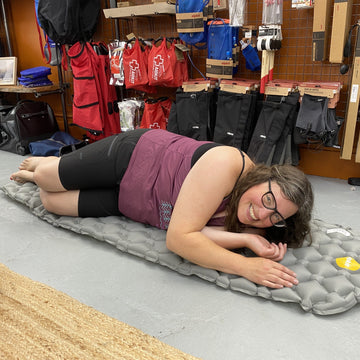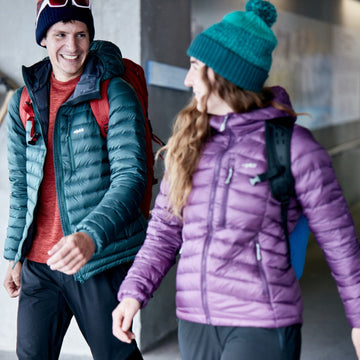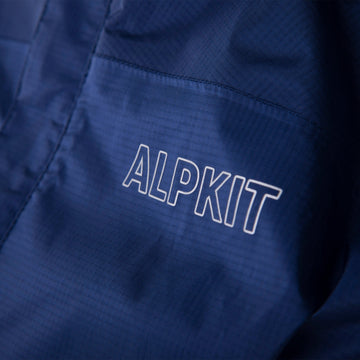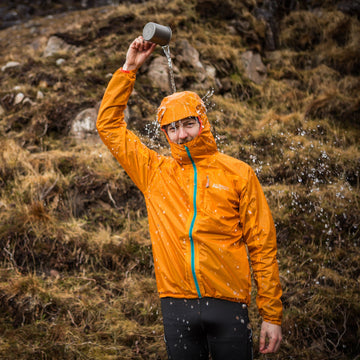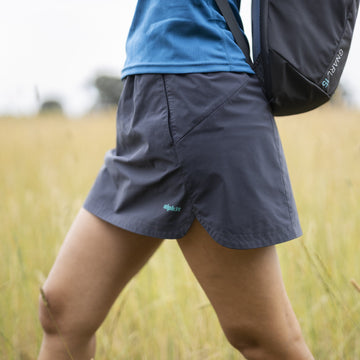
Merino wool is breathable, moisture-managing, odor-resistant, and temperature-regulating. Learn why it's an excellent choice for outdoor adventures.
Naturally breathable, temperature regulating, odour resistant, warm, lightweight and comfortable to wear? You won't baa-lieve how good it is. But what actually is merino wool? How is it different to regular wool? And what makes it such a good material for knocking about in the outdoors?
Merino wool is a brilliant material for technical clothing for a whole load of reasons. It wicks sweat and moisture away from your body when you are being active and, unlike materials like cotton, it stays warm when it's wet. Another brilliant property of merino wool is that it is antibacterial. This means it stays smelling fresh (or at least fresher) even after several uses, making it brilliant for multi-day activities like a weekend bike-packing adventure or a climbing trip. Merino is also really soft and comfy too!
Everything You Need To Know About Merino Wool
- What is Merino wool?
- Where does Merino wool come from?
- How is Merino wool different to regular wool?
- What are the benefits of Merino wool?
- What is non-mulesed Merino wool?
- What is corespun Merino?

What is Merino wool?
Merino wool is a specific type of wool that comes from the Merino breed of sheep – well, it’s ‘breeds’ really but let’s not complicate things! Wool has to be finer than 24 microns (a measure of fibre diameter) to be classified as Merino.
Where does Merino wool come from?
Merino sheep originated in Spain but they’re now bred all over the world. Most of the world’s merino wool currently comes from Australia and New Zealand (we exclusively use Australian Merino wool).
How Merino wool is different to regular wool
Merino wool fibres are much finer than standard wool fibres which is why Merino sheep became such a prized breed. In fact, Merino fibres are so fine they’re around 1/10th of the width of human hair! This fineness is one of the reasons why Merino makes such a good material for outdoor clothing.
What are microns?
The diameter of wool fibres is measured in microns (μm) with each micron being one millionth of a metre. As a frame of comparison, the merino wool we use is 17.5 microns, while lambswool is usually around 25 microns. The smaller the fibre diameter, the finer the Merino and the softer it feels.
| < 17.5 microns | Ultrafine |
| 17.6 - 18.5 microns | Superfine |
| 18.6 - 19.5 microns | Fine |
| 19.6 - 20.5 microns | Fine medium |
| 20.6 - 22.5 microns | Medium |
| 22.6 - 24.0 microns | Strong |

What are the benefits of Merino wool?
Soft and prickle-free
Because they're so fine, merino wool fibres are much more flexible than standard wool fibres. This means that the ends of the fibres bend where they touch your skin, rather than sticking in and creating the prickly, itchy feeling you often get with coarse wool jumpers.
Faster drying
Merino fibres – particularly the ultrafine 17.5μm fibres we use – produce much lighter fabrics that absorb less moisture and dry quicker. We’re able to make fabrics this light because of the natural resilience of wool fibres to flexing, bending and stretching.
High warmth-to-weight ratio
Wool fibres have a natural waviness to them called ‘crimp’. It’s this crimp that makes wool so warm by creating lots of pockets of insulating air when the fibres overlap. The finer the fibres, the greater the crimp and the more air pockets that are created. This gives fine merino wool an unrivalled warmth to weight ratio.
Breathable and wicking
Wool is naturally breathable. Unlike synthetic fabrics, it’s capable of absorbing moisture into its own fibres, before releasing it to the outside. Wool can absorb up to 35% of its own weight in water before it starts to feel damp, holding moisture away from your skin to keep you dry and comfortable. And when it can’t absorb any more moisture, wool will mechanically wick sweat as well.

Temperature regulating
Wool controls your temperature by slowing down or speeding up the rate of evaporation of the moisture held in its fibres. When you warm up, it releases more moisture to cool you down. And when you get cold, it slows down this evaporation. By working at a fibre level, wool keeps you comfortable across a wider range of temperatures.
Odour resistant
Because it’s so breathable, wool prevents the warm, moist conditions that odour-causing bacteria thrive in. On top of that, wool can also absorb odours into its fibres, merino wool clothing">only releasing them in washing. This means you can wear Merino wool clothing for days without worrying about offending anyone’s nostrils!
Insulates when damp
Wool has a natural elasticity from the crimp in its fibres. When wool gets wet, this bounce stops the fibres from collapsing and losing all those insulating air pockets. You’ll still lose heat through conduction, but it means wool will keep you warmer in damp conditions than other fabrics. Plus, when wool gets wet, it produces an exothermic reaction (one for the chemistry buffs) that releases a small amount of heat.
Sustainable
Merino wool is a natural and renewable material, requires less frequent washing (reducing water and energy consumption) and is completely biodegradable at the end of its life.

What is non-mulesed Merino wool?
Mulesing is a method employed by some farmers to prevent the loss of sheep to a parasite called flystrike. It involves removing strips of skin from around the sheep’s bum to stop wool growing in that area, getting dirty, and attracting the insects that cause the infection.
There are much kinder ways to protect sheep from flystrike, such as regular washing and shearing. These methods are more expensive, but we think it’s worth it to avoid using this practice. That’s why all Alpkit merino wool clothing comes from certified non-mulesing farms. This means you can rest assured that your base layer came from a sheep that got a regular wash and trim rather than the cheaper, grim alternative.
What is corespun Merino?
'Corespun' is a clever manufacturing method that improves the durability and elasticity of merino wool clothing without losing any of its benefits. It's made by wrapping a central thread of nylon and elastane with merino wool fibres to create a single yarn. Clothing made with corespun Merino lasts longer, stretches more and recovers its shape better. We use corespun Merino for our Merino underwear and leggings, cycling jerseys, liner beanies and liner gloves to improve their comfort, fit and lifespan.

How we use Merino wool
Merino wool's incredible combination of properties means that it makes a fantastic base layer material. Its breathability and temperature regulation keeps you comfortable across a broad range of temperatures. In winter, a high warmth-to-weight ratio allows you to boost your layering system for very little extra bulk (including your extremities with liner gloves and merino wool liner hat">hats). And where most base layers would send our odour-ometers into overdrive after a few days of backpacking or cycle touring, Merino stays fresh for days.

![Kepler Short Sleeve [Mens]](http://us.alpkit.com/cdn/shop/files/mens-kepler-short-sleeve-navy.jpg?v=1768762939&width=768)

![Kepler Short Sleeve [Womens]](http://us.alpkit.com/cdn/shop/files/womens-kepler-short-sleeve-cosmos.jpg?v=1768417177&width=768)
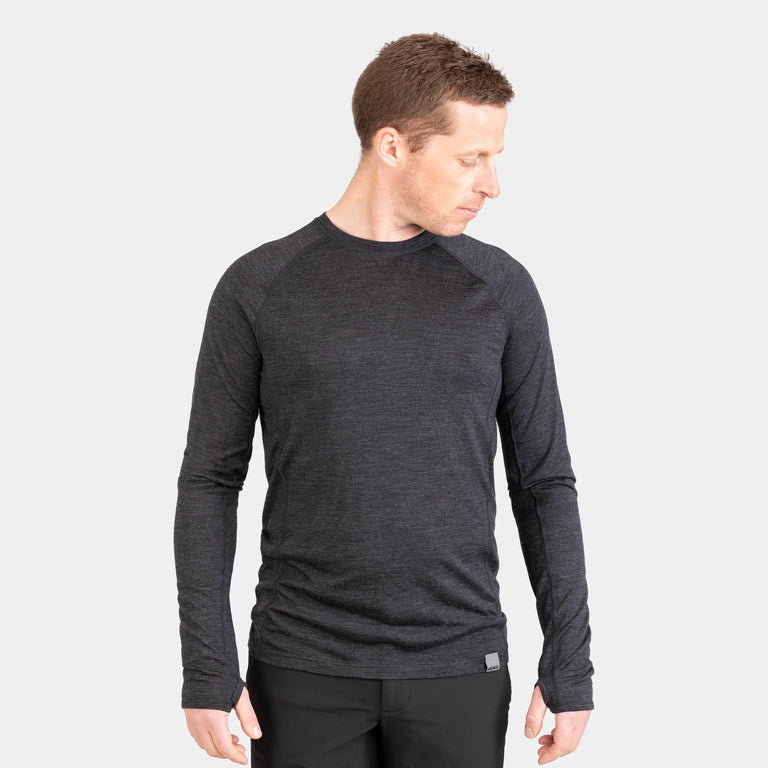



![Aztec Long Sleeve [Mens]](http://us.alpkit.com/cdn/shop/files/mens-aztec-long-sleeve-2025-outer-space.jpg?v=1765565687&width=768)
![Aztec Long Sleeve [Mens]](http://us.alpkit.com/cdn/shop/files/aztec-ls-mens-2025-outerspace-3.jpg?v=1765565687&width=768)
![Aztec Long Sleeve [Womens]](http://us.alpkit.com/cdn/shop/files/womens-aztec-long-sleeve-2025-outer-space.jpg?v=1764269683&width=768)
![Aztec Long Sleeve [Womens]](http://us.alpkit.com/cdn/shop/files/womens-aztec-long-sleeve-2025-sangria.jpg?v=1764269683&width=768)
![Aztec Short Sleeve [Mens]](http://us.alpkit.com/cdn/shop/files/mens-aztec-short-sleeve-2025-outer-space.jpg?v=1765392847&width=768)
![Aztec Short Sleeve [Mens]](http://us.alpkit.com/cdn/shop/files/aztec-ss-mens-2025-jasper-1.jpg?v=1765392847&width=768)
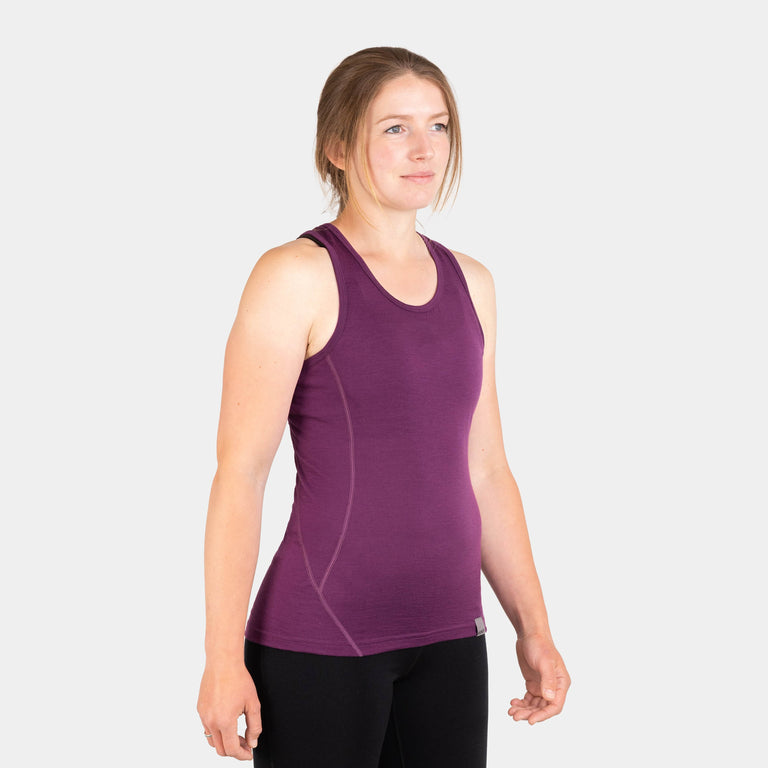
![Kepler Vest [Womens]](http://us.alpkit.com/cdn/shop/files/kepler-vest-womens_07b896c4-6e7c-40bb-8a9c-a6597aef20eb.jpg?v=1717536499&width=768)
![Kepler Long John [Mens]](http://us.alpkit.com/cdn/shop/files/mens-kepler-long-black.jpg?v=1717536160&width=768)








